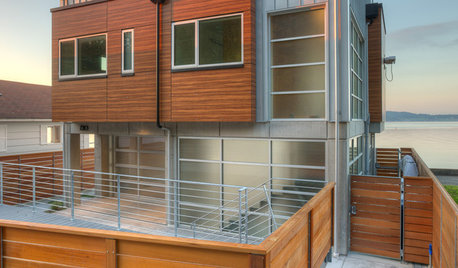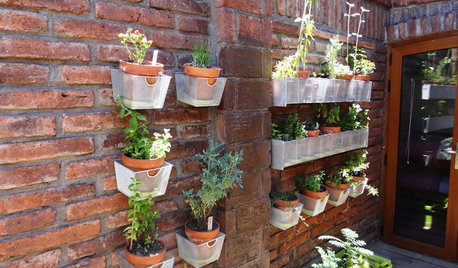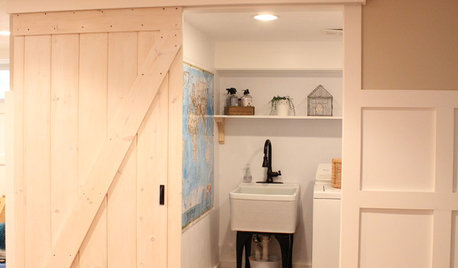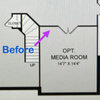Odd waterproofing method?
lisab_2007
17 years ago
Related Stories

BATHROOM DESIGNConvert Your Tub Space Into a Shower — Waterproofing and Drainage
Step 4 in swapping your tub for a sleek new shower: Pick your waterproofing materials and drain, and don't forget to test
Full Story
ARCHITECTUREHouzz Tour: Sturdy Enough for a Tsunami
Storms don't scare this Washington state home; breakaway features and waterproof finishes let it weather high winds and waves
Full Story
EDIBLE GARDENSHouzz Call: Where Are the Craziest Places You Grow Edibles?
Basil in a bathtub, spinach stacked up a wall ... If your edibles occupy an odd spot, we’d like to know
Full Story
DIY PROJECTSMake Your Own Barn-Style Door — in Any Size You Need
Low ceilings or odd-size doorways are no problem when you fashion a barn door from exterior siding and a closet track
Full Story
EXTERIORSWhere Front Yards Collide: Property Lines in Pictures
Some could be twins; others channel the Odd Couple. You may never look at property boundaries the same way again
Full Story
KITCHEN CABINETSChoosing New Cabinets? Here’s What to Know Before You Shop
Get the scoop on kitchen and bathroom cabinet materials and construction methods to understand your options
Full Story
ORGANIZING‘Tidying Up’ Author Marie Kondo Tells How to ‘Spark Joy’ at Home
A new book from the author of ‘The Life-Changing Magic of Tidying Up’ delves deeper into her KonMari Method of decluttering and organizing
Full Story
HOUSEKEEPINGHow to Clean Grout — Stains and All
If your grout is grossing you out, this deep-cleaning method will help it look new again
Full Story
LIFE6 Ways to Cool Off Without Air Conditioning
These methods can reduce temperatures in the home and save on energy bills
Full Story
GARDENING AND LANDSCAPINGWonderful Ways to Hang Outdoor Curtains
From rods and hooks to rope, these hanging methods and curtain types will have your outdoor room made in the shade
Full Story







worthy
ron6519
Related Professionals
Catonsville General Contractors · Dallas General Contractors · Highland City General Contractors · Newington General Contractors · Oneida General Contractors · Mansfield Interior Designers & Decorators · Charleston Architects & Building Designers · Decatur Flooring Contractors · Inver Grove Heights Flooring Contractors · Johns Creek Flooring Contractors · Los Angeles Flooring Contractors · Medway Flooring Contractors · Superior Flooring Contractors · Waterbury Flooring Contractors · Wheat Ridge Flooring Contractorslicwaterproofer
sistermary